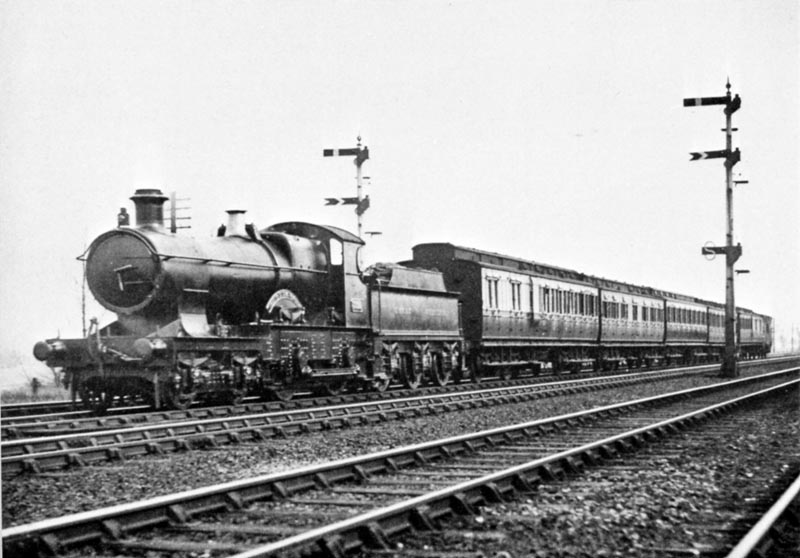|
Locomotives Named Ottawa By Colin Churcher from research notes prepared
by David Knowles of the C. Robert Craig Memorial Library There is a
long‑standing world‑wide tradition on railways of "naming" their
locomotives. The tradition was particularly strong in the very early
days of
the railways, and locomotives often carried names before they carried
numbers.
Gradually, however, as locomotive rosters expanded the practice
declined,
although it never entirely disappeared. Few of the larger railways
outside of
the United Kingdom retained the practice although some named small
classes,
often of high profile locomotives used on first class "named"
passenger trains. Some smaller roads did follow the practice for a long
time. The
names chosen varied considerably. A class
of locomotives often carried similar or linked names. Names linked to
speed or
power were common on many railways, as were the names of the railway's
officers
or their wives. Also common were the towns, cities and geographical
features
along a railway's routes, and the names of destinations that the
railways hoped
to reach one day. The use of town and city names were to commemorate
the
important communities of the line and to attract publicity and support.
It was
an attractive tradition and it may actually have helped to build
support for
the individual railways and their services. (Source: Unpublished manuscript by S.R. Elliot)
“Locomotive
“Ottawa” at Sussex Street Station, Ottawa in August 1861.
Robert Graham is the engineer. This is
the earliest known railway photograph of the Ottawa area.”
(Source: Brown, The Last Broad Gauge.) 3. The second "Ottawa" of the Carillion and Grenville had originally been named "Carillion" but was renamed after the first "Ottawa" was "retired" in 1895. This locomotive was originally built as a 2‑2‑2 by the "Canada Works" of the Peto, Brassey, Bates and Jackson Company in (Sources: Railroad History #147, picture reference p.32; Brown, The Last Broad Gauge.) 4. The "Ottawa" of the Quebec, Montreal, Ottawa and Occidental Railway migrated to the Canadian Pacific Railway on the purchase of the QMO&O and appeared on the CPR roster in June 1882. It became CPR #244. In July of 1905 it moved to the New Brunswick Southern Railway where it became #6. It is not known if it carried the "Ottawa" name in CPR service. (Sources: Hilton, American Narrow Gauge Railroads p.36; Railroad History #83; Lavallee, CPR Locomotives) 5. Another Ottawa based railway the Canada Atlantic also had a locomotive named "Ottawa". This was originally built for the Vermont Central Railroad where it carried road number 28 and was named "Sarelle" and later "Granby". It was acquired by the Canada Atlantic in 1881, at which point it probably acquired its Ottawa name. It was scrapped in 1889. (Sources: Railroad History #147, p.96) 6.
The final locomotive named
"Ottawa" was #3399 of the "Bulldog" class of the Great
Western Railway of the United Kingdom. It was a 4‑4‑0 with 68"
drivers
and 18"x26" cylinders. It was one of 156 locomotives in its class
which were built between 1899 and 1910. The names assigned to the class
covered
a wide range of subjects but there was a block from #3391 to "3409 that
were drawn from empire countries and cities; #3391 was Dominion of
Canada; #3397 Toronto; #3398, Montreal;
#3399,
Ottawa; #3400, Winnipeg; & #3401, Vancouver. Originally numbered
3461 when
built in February 1904, "Ottawa" was withdrawn from service in October
1947. "Ottawa" was an elegant
4‑4‑0 with clean boiler lines, a Belpaire firebox, inside cylinders, a
short
cab with no side windows and a curved "Ottawa" nameplate over the
leading driver.  Bulldog class 4-4-0 No. 3399 Ottawa on the 2.38 pm
Reading to Swindon
stopping train coming into Tilehurst on 31 March 1926. From “Truly the
Great
Western” by Maurice Earley. One
of the “Ottawa” nameplates was
presented to the City of Ottawa. It was subsequently rescued from a
dumpster
and saved and its current location is unknown. One
of the members of the Quainton
Railway Society located in Buckinghamshire, England has stored an
“Ottawa”
nameplate since purchasing it from Swindon soon after the locomotive
was broken
up. It was purchased for 17 shillings and sixpence.
It was sent via goods wagon from Swindon to
Amersham and was transported home on his bicycle. The
nameplate has subsequently been restored
to its former condition for display in the museum.
It was claimed that there are three “Ottawa”
nameplates in existence in the United Kingdom, one of which is a
replica.
Sources: Casserly & Johnston, Locomotives at the Groupings ‑ Great Western, emails with Quainton Railway Society. Summary
[1] This
railway became
the Ottawa and Prescott in 1855 and then the St. Lawrence
and Ottawa in 1867. It was acquired by the Canadian
Pacific Railway in 1884.
A few short sections of the roadbed remain in
use. A major part is now the route of the O-Train transit line.
In February 2020 John Peakman writes:
(I) thought you might be interested in details about an engine named Ottawa that is not mentioned on your web page. The engine in question is German, a 2-4-0 tender engine built by Schwartzkopff, works number 487 of 1873 for the Königlich Sächsische Staatseisenbahnen as their number 445, later class IIIb number 312. It was retired in 1922. From looking at the list of engines in the same class it seemed that a number were named after non German cities, such as Baltimore, Topeka, Denver, Adelaide, and Dundee. At least four were named after US States, and at least two were named after Canadian cities, Ottawa and Toronto. I don't have the full list but there may have been more. |
![]()